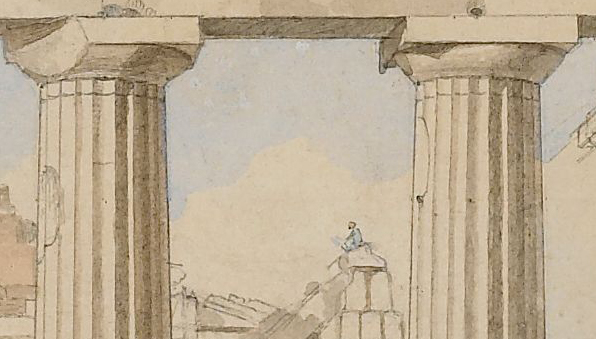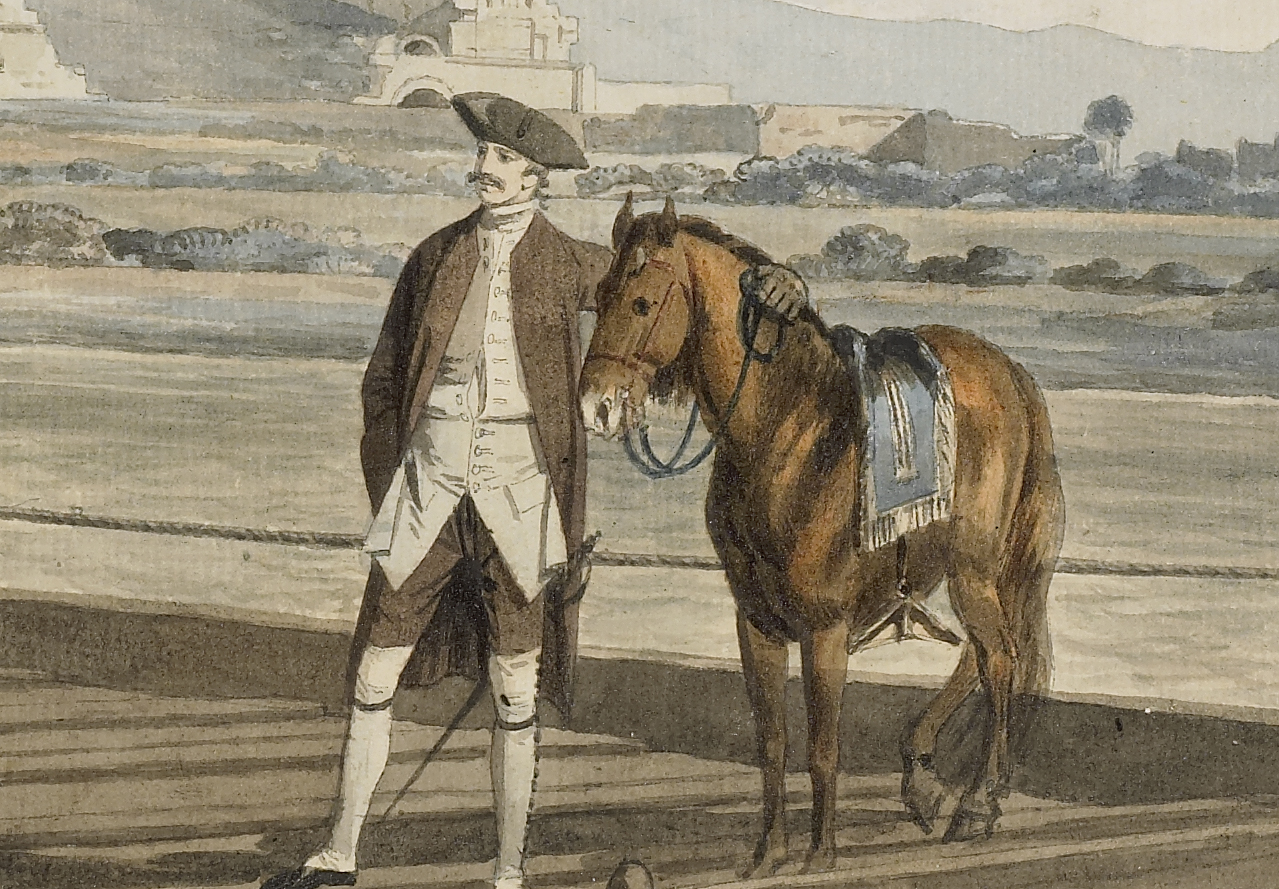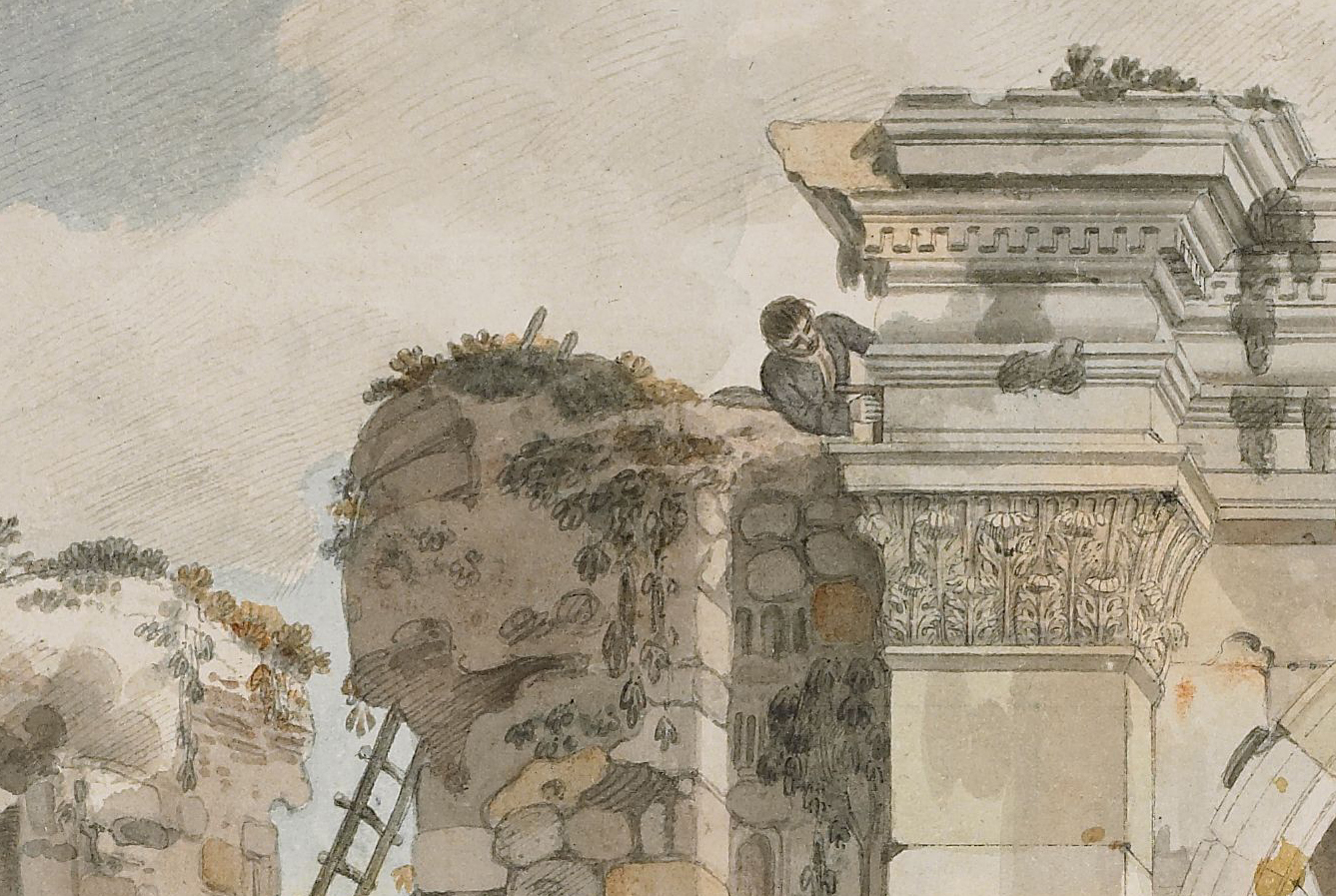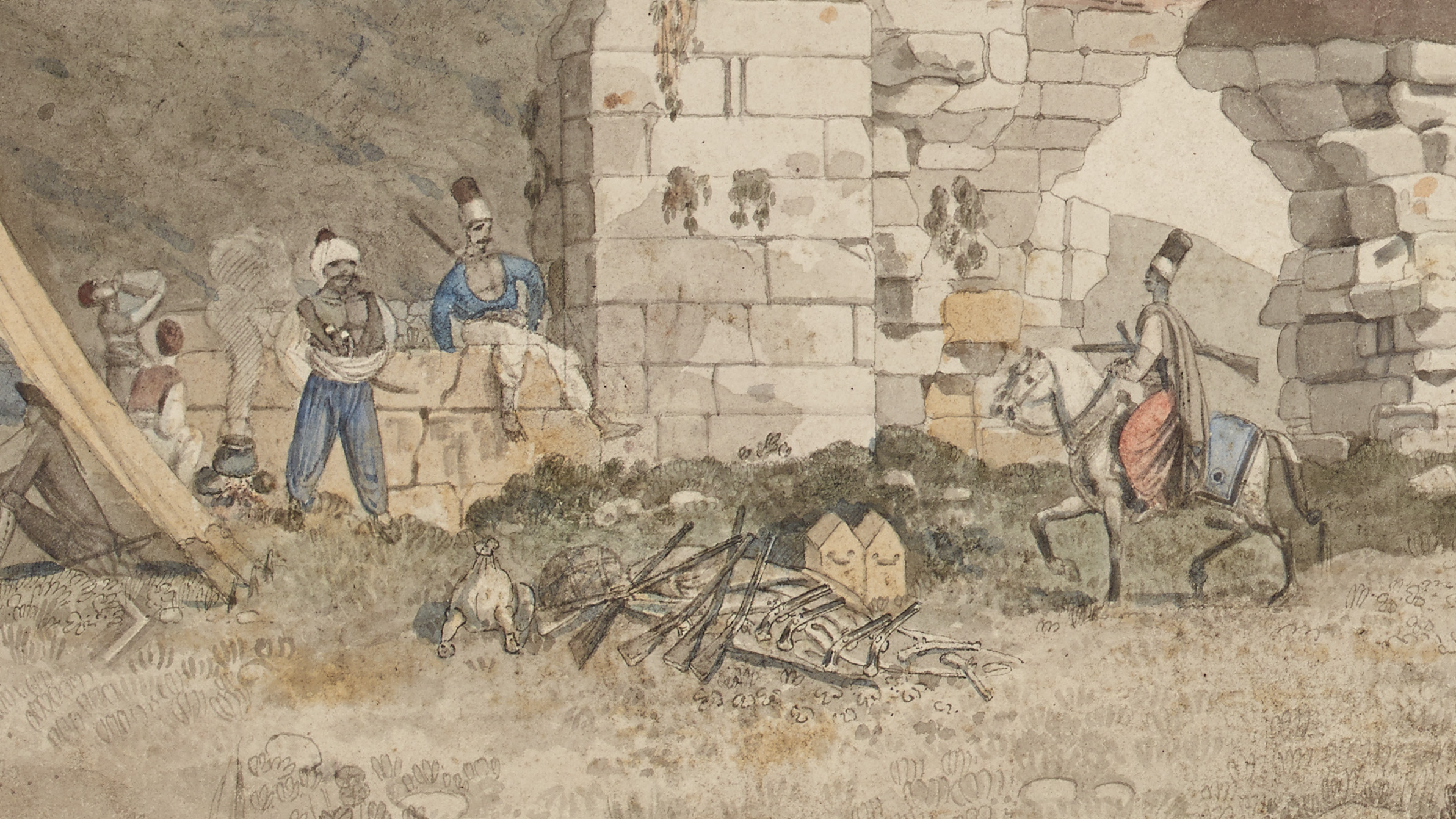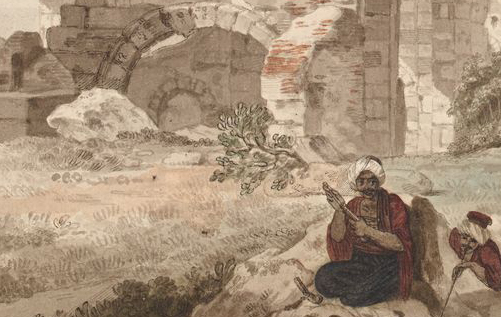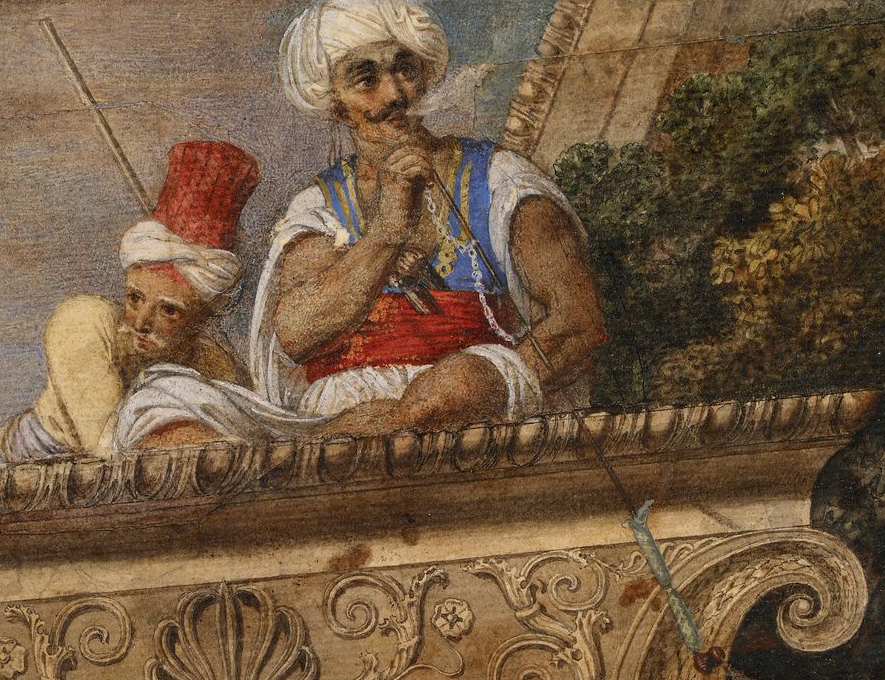William Pars
The focus of the exhibition is the watercolours by the artist William Pars (1742-1782), who was only 22 when he was appointed to the Ionian expedition. He had just begun to exhibit paintings in oils at the Society of Arts in the Strand, London, and was teaching drawing at his brother’s academy nearby. His training had included life drawing and drawing from casts at the Royal Academy of Arts and he had also learnt to draw landscapes from nature on the spot – all useful skills for the expedition artist.
It was Pars's job to record not only the landscape and ruins, but also the sculptures they found and the local people they travelled with and encountered. The sketches he made on the spot were worked up into the finished watercolours after the travellers’ returned to England. After the expedition, he worked for patrons in England as well as in Switzerland, Ireland and Italy. In autumn 1782 Pars contracted pleurisy while drawing with his feet in water in the Grotto of Neptune at Tivoli. He died in October, after a short illness, aged just 40.
